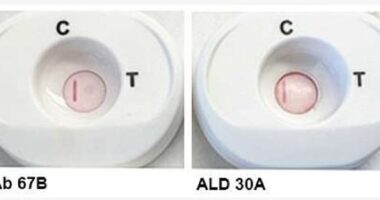


Researchers found older women who undertake at least four hours of activities like cleaning or cooking per day have much healthier hearts than those who only do two or less hours of similar activity
Women who regularly wash dishes, clean the house and cook meals have healthier hearts than those who sit back and take it easy, a study suggests.
Scientists at the University of California followed 5,500 women who were asked to wear movement-tracking gadgets for a week.
Results showed women who did at least four hours of ‘daily life movement’ cut their risk of a death from a heart attack or stroke by almost two thirds.
Daily life movement was defined as just simple routine activities, which include cooking, household chores, gardening and even showering.
An array of studies have already shown that regular dedicated exercise, such as brisk walking, is vital in maintaining heart health.
But the new research, in the Journal of the American Heart Association, shows even less demanding activities can also help women stay healthier and potentially live longer.
Heart disease, is one biggest causes of death for women in the UK, killing about 24,000 a year, about 66 each day.
It is the leading cause of death for women in the US, responsible for a fifth of all deaths among females recorded in 2015.
Medics measured the physical activity of nearly 5,500 women aged between 63-97 who did not have heart disease at the start of the study.
Participants wore wear a accelerometer for up to seven days between May 2012 and April 2014 to measure what type of and how much physical activity they were doing.
Researchers then followed up the woman until the end of February 2020 by which time 616 women had been diagnosed with cardiovascular disease, 268 with coronary heart disease, 253 had had a stroke, and 331 had died of cardiovascular disease.
Analysing the data, the experts found that women who did at least four hours of ‘daily life movement’ had a 62 per cent lower chance of cardiovascular death, compared to those who did less than two hours.
Women who did more of these activities had a 43 per cent lower risk of having cardiovascular disease overall, and specifically had a 43 per cent lower risk of coronary heart disease and a 30 per lower risk of a stroke.
Cardiovascular disease is a general term for variety of conditions affecting the heart or blood vessels usually due to the build-up of fatty deposits in the arteries.
It includes conditions like coronary heart disease which can lead to heart attacks, and medical emergencies like a stroke caused by the blood supply to the brain being blocked.
Dr Steve Nguyen, author of the research, said the results showed the difference even little bits of movement could make to cardiovascular health.
‘The study demonstrates that all movement counts towards disease prevention,’ he said.
‘Spending more time in daily life movement, which includes a wide range of activities we all do while on our feet and out of our chairs, resulted in a lower risk of cardiovascular disease.’
Professor Andrea LaCroix, an expert in epidemiology, and another author of the study, said encouraging older adults to engage in this lighter form of physical activity could have health benefits.
‘Understanding the benefits of daily life movement and adding this to physical activity guidelines may encourage more movement,’ she said.








